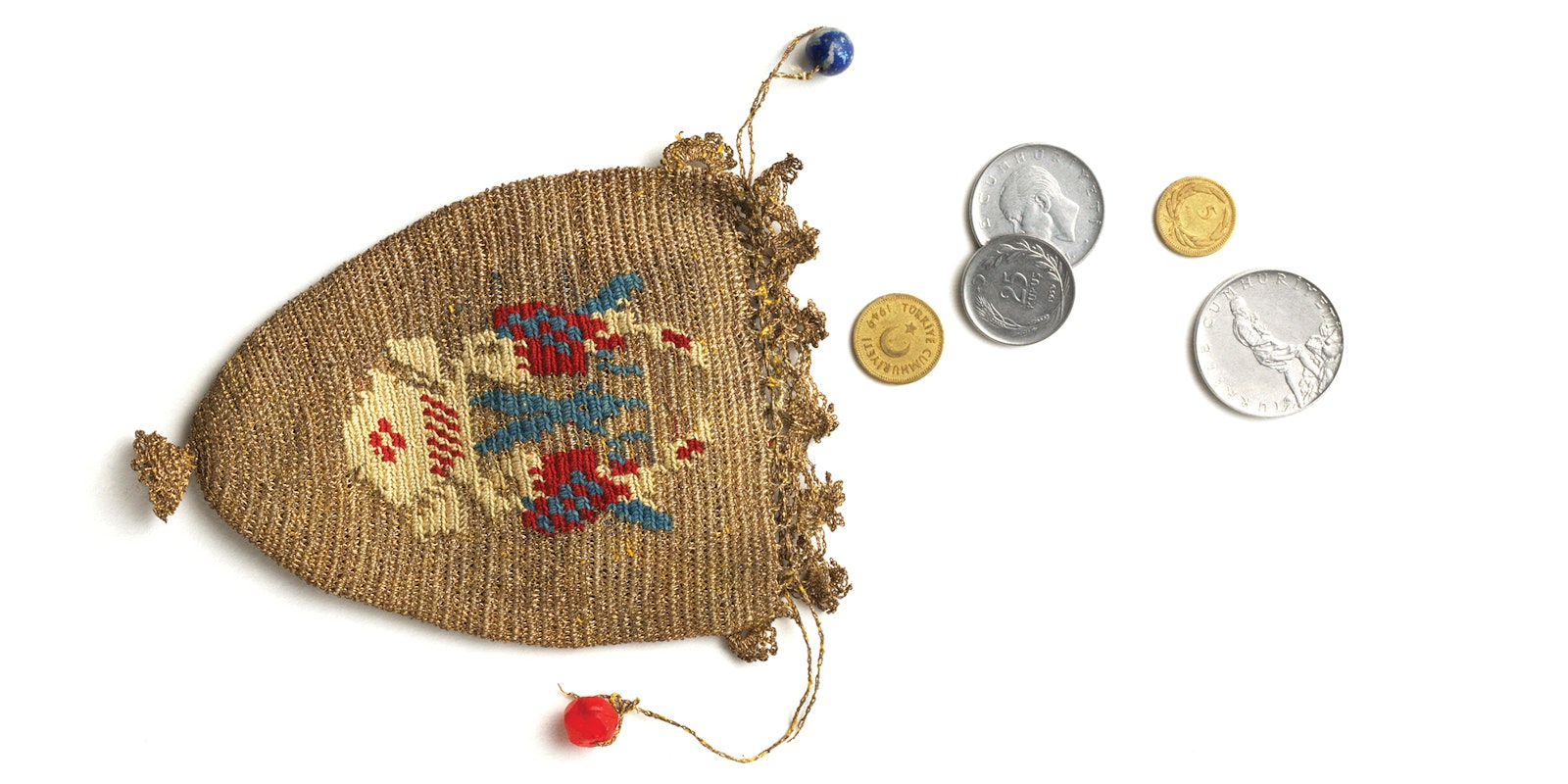Seeing a small, gold-metallic coin purse from Turkey lying in the display case of the antiques store near my home immediately evoked visions of Istanbul conjured by the words and black-and-white photographs in Orhan Pamuk’s memoir Istanbul: Memories and the City (New York: Vintage, 2006), which I had recently read. I’ve never been to Turkey myself, but I have a slide show of this beautiful land playing in my mind based on my reading and on my familiarity with the country’s traditional textiles. To me, Istanbul is a dream combining rich cultural traditions originating in its earlier days as Byzantium and Constantinople with its vibrant presence today as the world’s second-largest city, all with an Eastern mystique that is exotic to my American mind.
Now my mind drifts to the countryside, where women knit or crochet socks and slippers, beginning at the toe in elaborate colorwork patterns worked in simple stockinette stitch or slip-stitch crochet or in plain undyed wool decorated with openwork stitches. Turkey’s rich textile history also includes woven carpets and kilims, as well as handwoven silks decorated with metallic threads, but it is the smaller knitted and crocheted pieces and their human connections that most interest me. I picture hands, young or old, soft or weathered, making the same stitches that I know how to make, while the woman through whose hands the yarn flows quietly whispers words in Turkish—I understand that she is counting.
 Details on Donna’s purse from Turkey
Details on Donna’s purse from Turkey
My little Turkish purse (of course I had to buy it!) reminds me of the Ottoman Empire and the glory days of Constantinople. The gold metal thread, the colors of the central motif, and the elaborate filigree of the crochet stitches at the top edge, all speak to me of opulence. The gold thread is crocheted over a thin cord to give it more body; the entire bag is of dense single crochet worked through the back loop. The stitches are minute and absolutely even in size, shape, and tension. A pictorial motif is worked in crochet intarsia on both sides. Is it a coat of arms? A crest? A bird? A person? No matter how long I stare at it, I cannot decide.
Today, the purse is faded. The colors of the cotton motif are bright only on the inside. And it’s inside that I made a discovery that has further piqued my curiosity—along with a few old coins I found the following handwritten note:
This gold bag is a Turkish Antique given to me on our departure from Turkey by Mrs. Perlitz. Mrs. Perlitz said that purses like this with coins (possibly gold) were given by Sultans or important people as substantial gifts.
—Marion Wallis
Who was Marion Wallis? When and why was she in Turkey? Was her husband a diplomat or a merchant? Who was Mrs. Perlitz? Perhaps, more important, who created this bag and why?
Interested in bags of all shapes and sizes? This article and more can be found in the September/October 2013 issue of PieceWork.
Also, remember that if you are an active subscriber to PieceWork magazine, you have unlimited access to previous issues, including September/October 2013. See our help center for the step-by-step process on how to access them.
Donna Druchunas escaped a corporate cubicle to honor her passions for knitting, world travel, research, and writing. She is the author of six knitting books, a contributor to many others, and co-owner, with Ava T. Coleman, of Stories in Stitches, a company offering historically based knitting publications and workshops. Visit her website at www.sheeptoshawl.com.
Originally published March 31, 2021; updated June 19, 2023.

